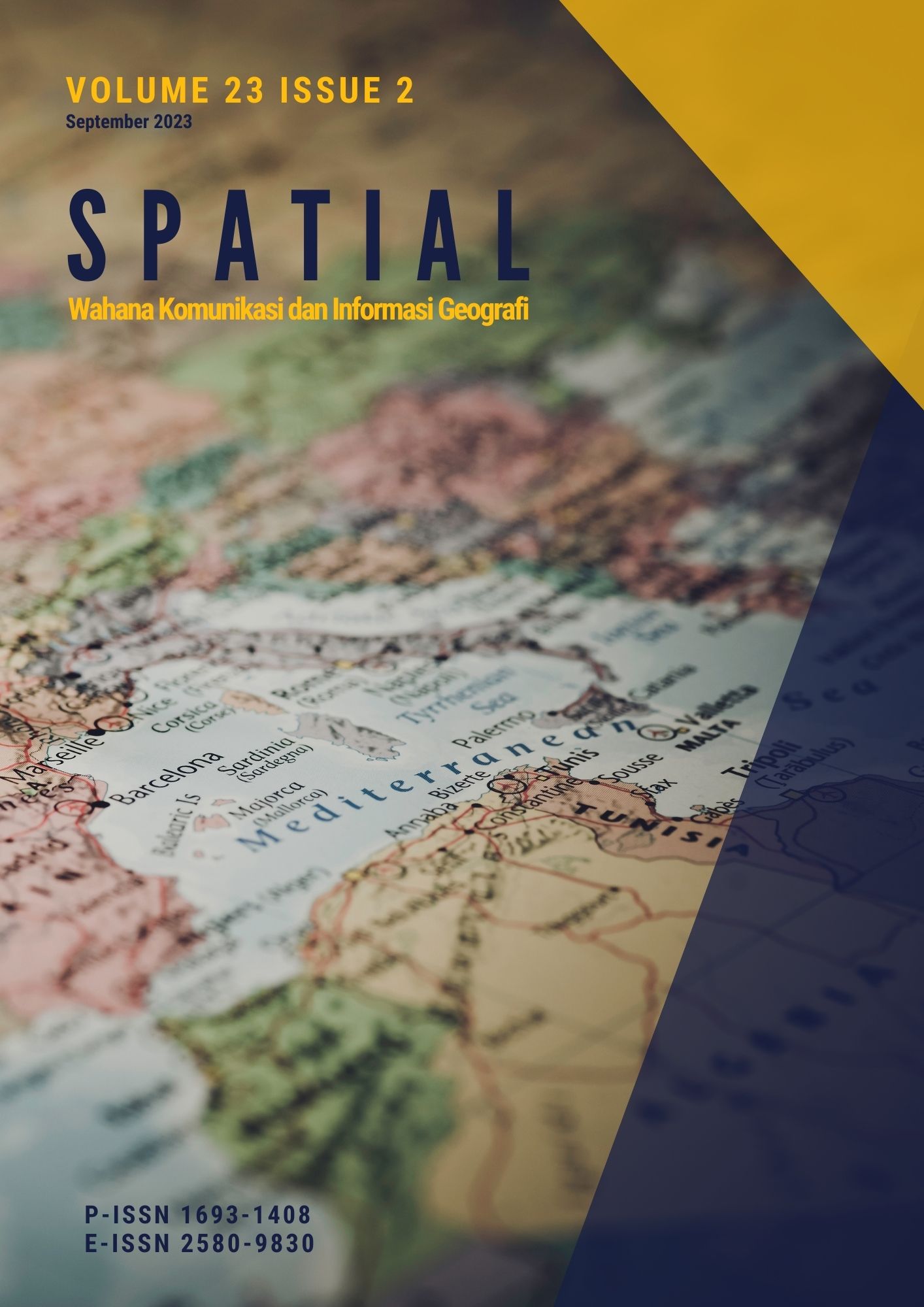Analisis Spasial Temporal Perubahan Tutupan Lahan di Sekitar Waduk Pendidikan Diponegoro menggunakan Data Google Earth
DOI:
https://doi.org/10.21009/spatial.232.05Keywords:
Land cover change, Semarang City, The Diponegoro Education Reservoir, Google EarthAbstract
The Diponegoro Education Reservoir is located in Tembalang District, Semarang City, Central Java Province. This reservoir was built for academic purposes and also to control floods around its neighbourhood. Semarang City has a high level of floods vulnerability. Located in the northern part of Java Island which is close to the Java Sea added with limited land availabilty and increased number of human population, make Semarang City is prone to flood. Based on data from the Central Statistics Agency, in 2007 the population in Semarang City was around 1.45 million people, in 2015 it rose to 1.59 million people, and in 2021 it will again increase to 1.65 million people. This increase in population cause various spatial problems that have an impact on flood vulnerability, one of which is the problem of land use. Therefore, a land cover analysis around the Diponegoro Education Reservoir is needed. This study conducted a temporal spatial analysis of land cover for 2007, 2015 and 2022 using Google Earth data. The method used is on screen digitization to obtain 3 classes of land cover classification, namely bodies of water, built-up land and non-built-up land. The hope is that the results of this research can present land cover data around the Diponegoro Education Reservoir in 2007, 2015 and 2022 as input to policy makers regarding spatial planning and disaster for sustainable development.
Downloads
Published
How to Cite
Issue
Section
License
Copyright (c) 2023 Yulia Indri Astuty, Adi Wibowo

This work is licensed under a Creative Commons Attribution 4.0 International License.
An author who publishes in the journal SPATIAL Wahana Komunikasi dan Informasi Geografi agrees to the following terms:
Author retains the copyright and grants the journal the right of first publication of the work simultaneously licensed under the Creative Commons Attribution 4.0 License that allows others to share the work with an acknowledgement of the work's authorship and initial publication in this journal
Author is able to enter into separate, additional contractual arrangements for the non-exclusive distribution of the journal's published version of the work (e.g., post it to an institutional repository or publish it in a book) with the acknowledgement of its initial publication in this journal.
Author is permitted and encouraged to post his/her work online (e.g., in institutional repositories or on their website) prior to and during the submission process, as it can lead to productive exchanges, as well as earlier and greater citation of the published work (See The Effect of Open Access).
This work is licensed under a https://creativecommons.org/licenses/by/4.0/









